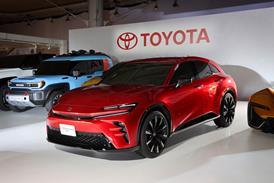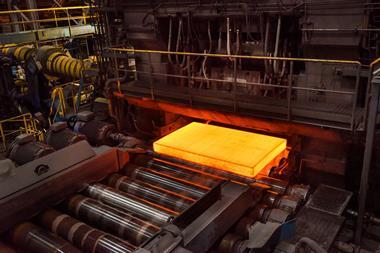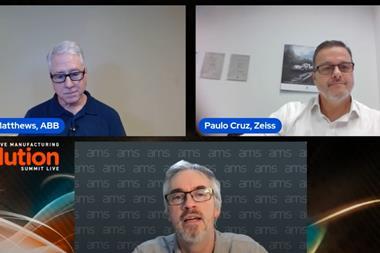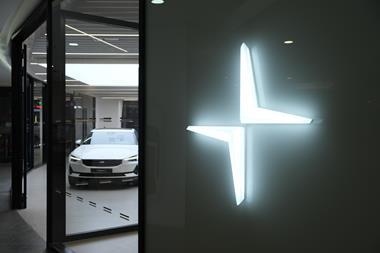The heavy-duty, commercial vehicle sector faces the same challenges in terms of reducing its environmental footprint and is similarly developing alternative fuel vehicles. SSAB discusses how truck OEMs can leverage the car maker’s lightweighting lessons

For many truckers, lightweighting isn’t so much about fuel efficiency as it is about total cost and freight efficiency; being able to earn higher revenue by hauling more, while staying under the legal weight limits. Some truck components that had been switched from traditional carbon steel to lightweight aluminum, or even carbon-fibre reinforced polymers (CFRP), are now good candidates to be produced using more economical and durable advanced high strength steels (AHSS).
The use of AHSS and UHSS (ultra-high strength steels) in automobiles keeps increasing with almost every new car introduction or model update. Some of this AHSS/UHSS use is to meet more stringent safety/crash standards. But weight reduction is probably the leading reason, and the automotive examples provide some guidelines as to truck lightweighting possibilities.
UHSS battery pack protection for electric trucks
To meet globally agreed-upon climate goals, all trucks — including big rigs doing long hauls — will eventually need to use either electric batteries, fuel cells, or hydrogen combustion. But before electric trucks become widely used, the trucking industry (in the USA, at least), needs to develop crash standards for battery packs.
The North American Council for Freight Efficiency or NACFE notes in its February 2021 Lightweighting Confidence Report: “The concern is that there is no known standard on battery pack durability testing (for heavy trucks), such as a vehicle impact test, nor is there a standard on a way to protect the pack. Ideally the batteries would be packaged within the frame rails and protected from passing vehicles, without additional structure and weight, yet that does not seem feasible for today’s duty cycles and the required volume of batteries available.”
Truck OEMs can take advantage of some of the groundbreaking work already done by the car industry, which does have Battery Electric Vehicle (BEV) battery protection standards. Today’s electric cars feature battery enclosures (battery trays, cages, or frames) that use lightweight aluminium and/or AHSS steel in innovative ways.
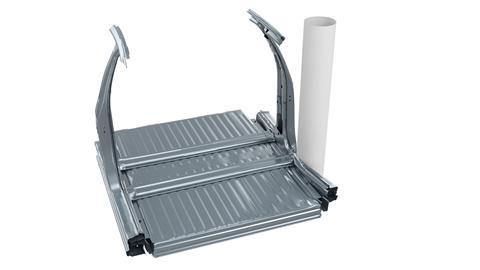
The most challenging crash safety standard for BEV cars is the side pole impact test. Factors include the heavy weight of the EV batteries, their large size, and the need to withstand crashes so as not to cause battery-cell thermal runaway fires, which are virtually impossible to extinguish.
BEV car designers have risen to these challenges, placing batteries below the floor of the passenger compartment and, in turn, making the enclosure a major, multifunctional, body-in-white structural component. SSAB has proposed a EV Design Concept which includes, among other ideas, a proposal for a lightweight battery enclosure with energy-absorbing sill beams, energy-transferring floor cross members, and 3D cold-roll-formed battery-carrying structure made from Docol 1700 MPa martensitic steel. The frame around the EV battery tray not only protects the pack from impact, it’s also a stabilising structure, providing torsional stiffness and offers inspiration for future BEV truck designs.

Truck chassis frames and frame rails using UHSS
A priority for designers of truck frames is a material’s strength, stiffness, and fatigue properties, since truck chassis are constantly subjected to shock loads and twisting. A traditional, baseline, Class 8 (USA) frame is a steel construction using 120ksi (827MPa) steel. Converting the truck’s frame to, for example, 160ksi (1100MPa) Docol cold-rolled 1100M martensitic steel allows truck OEMs to reduce gauge thickness and save 90kg.
To realise additional weight reductions, truck designers are exploring tailoring the thickness of the steel across the length of the frame rail, to optimise the amount of AHSS strength where it’s needed. They could also run cost/benefit analyses for even stronger UHSS steels, for example Docol hot-rolled, cold-formed 1200M.
NACFE reports that one truck OEM recently stopped offering aluminium frame rails, probably due to their lack of durability. One participant in the NACFE survey reported: “They (aluminium frame rails) don’t fatigue, they fail catastrophically.”
The report goes on to note that aluminium’s lower modulus of elasticity (its stiffness) compared to steel makes aluminum sagging a common problem – ruling out aluminum frame rails for a range of weight-sensitive truckers, such as tanker trucks.
Making truck cross members more durable
While lightweight aluminium cross members are growing in popularity, many truck OEMs have the same concerns about using this material in this application as they have about aluminium frames; namely, aluminium’s lack of long-term durability when it comes to stiffness, twisting, and fatigue. AHSS steels could prove to be the more durable and economical alternative for truck cross members.
Lightweighting truck cabins with AHSS
Even the most weight-sensitive trucking companies (bulk haulers) do not want to use shorter sleepers to save weight; retaining company drivers with a comfortable, “home away from home” is just too important.
On the other hand, when it comes to owner-operators, one fleet administrator put it this way, “Lightweighting is (freight efficiency) revenue…I only hire owner-operators with tractors that weight less than 16,000 lbs (7260 kg).”
Either way – using company drivers or owner-operators – it’s clear that keeping sleeper cabin weight in check is key, especially as sleepers continue to grow in size, such as the “condo or high rise” cabins. The NACFE Report points out, “With the many innovations in steel, there is significant potential to reduce weight while maintaining a common supply chain.”
Increased safety using AHSS truck bumpers and underrun protection
Truck designers are noting that car OEMs and Tier 1 suppliers have been using ultra-high strength steels for bumper systems. UHSS grades such as press-hardening steels Docol PHS 1500 and PHS 2000 help create weight-saving, cost-effective bumpers with high crash protection performance.
Lightweighting compressed air tanks for truck brakes
Aluminium tanks can be up to 14kg lighter than conventional mild steel tanks. But advanced high-strength steels could match aluminium’s weight at significantly lower costs. Volvo has built a proof-of-concept truck that combined an aluminum air tank integrated as a cross member. A similar idea could use Docol AHSS steel, which is not only more economical than aluminium – it also has the embedded CO2 equivalence of recycled steel, even though it’s made largely from virgin iron ore.
Reducing forming costs for tractor roof fairings
Roof fairings help tractor-trailer be more aerodynamic and, in turn, more fuel efficient. But material conversions, to either aluminium or injection molded plastics, can simply be financially out of reach for the relatively low-volume Class 8 truck market.
NACFE reports, “A large injection mold tool for making those roof fairings can cost over US$1 million, and an aluminium body panel-stamping tool can be US$1.5m.” More economical AHSS steel, formed by equipment the OEM probably already has, may be a better lightweighting approach for roof fairings.
Increasing 5th wheel durability with AHSS
Tractor fifth wheels traditionally are a heavy-duty component, designed for frequent hooking and unhooking of trailers. NACFE notes that aluminium may not be the best choice for 5th wheels when “… it’s common for the kingpin to hit off-center, causing damage to the (aluminium) throat or the ramps…They are (also) so expensive compared to stamped and cast steel models, (that) the overall take rate (acceptance rate) is very low.” Potential AHSS steels for stamped tractor 5th wheels include martensitic grades, such as 1500MPa or 1700MPa.
Cost-effective, lightweight truck wheels
Both steel and aluminium wheel producers have successfully reduced the weight of their products in recent years. By further increasing strength levels with steel grades that are readily cold-formed into stretched flange edges and have high hole expansion ratios, steel wheel manufacturers could achieve additional lightweighting at eye-catching prices. Potential hot-rolled Docol AHSS grades for wheels include HR800CP, HR800HER, or HR600FB.
Instrument panel structures
Aluminium has replaced some panel structures, but obviously at higher costs. “Replacing the replacement” with AHSS steel, such as cold-rolled Docol CR600DP sheets and precision tubes, could deliver a price competitive, lightweighting edge to truck OEMs.
Offering lightweight truck components at attractive prices
In addition to their strength/lightweighting potential and attractive pricing compared to aluminium and CFRPs, AHSS and UHSS steels can frequently be made with cold-forming equipment that truck OEMs already use – with relatively minor upgrades to tooling.
Find out more
Docol AHSS/UHSS steels
SSAB innovates advanced high-strength steels for the mobility industry, providing its Docol AHSS/UHSS steels and expert resources to OEMs and Tier 1s so they can meet their lightweighting and crash performance goals. SSAB supplies a large number of standard grades of Docol high-strength automotive steels – including AHSS, UHSS and gigapascal strengths — with hundreds of variations to meet specific VDA, SAE, EN, JIS, and OEM standards.
From 2026 onward, many of the strongest Docol grades will be available in fossil-free versions via DRI processes powered by green hydrogen. SSAB’s fossil-free steels have the same premium performance properties as today’s grades. Find out more












